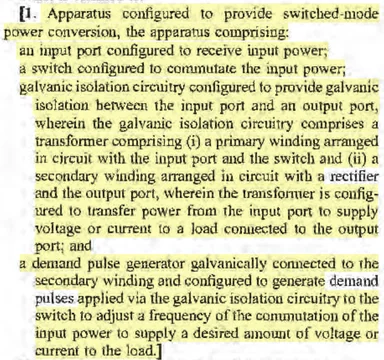
Last month Judge Noreika issued an order praising Chief Judge Connolly's ranking-based summary judgment procedure, and imposing a similar procedure—at least for one case.
Under his SJ procedures, Chief Judge Connolly addresses each party's motions in their ranked order, and if a single motion is denied, he may decline to consider all remaining motions.
Judge Noreika issued her order after the parties in the case, Dali Wireless, Inc. v. Commscope Techs. LLC, C.A. No. 19-952-MN (D. Del.), sought summary judgment on a total of eleven separate grounds, plus a cross-motion with two additional grounds.
Judge Noreika's lengthy order, issued just after the conclusion of summary judgment briefing, noted how unlikely it is that there are truly that many viable grounds for summary judgement:
It strains credulity to believe that there is not a single genuine issue of material fact in any of the six grounds raised in Plaintiff’s motion or any of the five grounds raised in Defendants’ motion.
She then went on to note the increasing burden of summary judgment motions, and praised Chief Judge Connolly's system for dealing with them:
WHEREAS, an important purpose of summary judgment is to narrow the issues for trial by resolving issues that can be decided in a party’s favor as a matter of law because there is no genuine dispute of material fact – i.e., it is not to conduct a de facto bench trial of sorts based on shotgun theories and voluminous submissions that burden the parties and waste judicial resources;
WHEREAS, there is sound reasoning in the ranked-choice procedure adopted by Chief Judge Connolly to combat excessive summary judgment motion practice in patent cases . . . ;
Finally, she imposed a four-part procedure on the parties, which encompasses not just summary judgment issues but also O2 Micro-style claim-construction issues:
1. The parties shall meet and confer and attempt in good faith to reach a resolution as to [certain issues] and shall file a joint letter with the Court indicating whether such a resolution has been reached such that Plaintiff’s motion . . . need not be addressed by the Court;
2. To the extent that the parties contend that disputes over claim scope still remain and must be resolved before an issue goes to the jury, the parties’ aforementioned joint letter shall also set forth what term(s) are still disputed, what issue(s) are implicated by the dispute over claim scope and each side’s proposed construction for the disputed term(s);
3. Plaintiff shall file a one-page letter with the Court ranking the grounds for summary judgment raised in its Partial Motion for Summary Judgment . . . in whatever order it chooses but with the understanding that once the Court denies summary judgment as to any single ground raised in Plaintiff’s motion, the Court will not address any summary judgment grounds that were ranked after that ground; . . . and
4. Defendants shall file a one-page letter with the Court ranking the grounds for summary judgment raised in its Omnibus Motion for Summary Judgment (D.I. 246) and CrossMotion (D.I. 269) in whatever order it chooses but, again, with the understanding that once the Court denies summary judgment as to any single ground raised in Defendants’ motions, the Court will not address any summary judgment grounds that were ranked after that ground.
Judge Noreika hammered home the impact of this order in a footnote:
For example, if Plaintiff places no anticipation as the first ground on its list and the Court denies summary judgment as to that ground, the Court will deny Plaintiff’s motion and not review any summary judgment grounds ranked after anticipation.
Note that the bold and italics on the word "scope" in paragraph 2 above were in the original. Judge Noreika has previously pointed out that the Federal Circuit's O2 Micro requires the Court to address claim construction disputes only when they go to "scope"—and she has noted it again since then.
Paragraph 2 looks like a way for the Court to avoid any inadvertent O2 Micro issues if it declines to consider some of the summary judgment motions.
Further Developments
The above order issued December 8, 2021. Since then, the parties have ranked their motions and filed a letter regarding claim construction disputes. This week Judge Noreika ordered further briefing on three disputes identified by the parties:
ORAL ORDER - As it appears that there is no dispute that at least three of the four claim construction disputes raised in D.I. 295 are dispositive, the Court will consider additional arguments on all four disputes. On or before January 27, 2022, each party may submit an opening brief of no more than 20 pages addressing the four terms. On or before February 2, 2022, each party may submit a responsive brief of no more than 10 pages. Additional intrinsic evidence is permitted, but extrinsic evidence must be kept to a bare minimum.
Does This New Procedure Apply to Every Case? No.
So far, it looks like this was a one-off procedure for a single case where the parties filed too many motions. Other current and new cases are still getting the opportunity to file summary judgment by default.
. . . But We May See More Procedures Like This
I do get the sense that change may be coming, at least for Judge Noreika cases, because she has tried a few different case management techniques recently. About a week after this order, for example, she instituted a different procedure in Gentex Corp. v. Galvion Ltd., C.A. No. 19-921-MN (D. Del.), where she required the parties to file letters seeking leave before filing any summary judgment or Daubert motions (similar to a procedure used by former Judge Sleet).
We've talked before about why parties file so many SJ motions in patent cases, and I don't think the root of the problem is going away any time soon. Instead, I expect we'll see more of these kinds of case management procedures as the Court deals with the burden of Judge Stark's likely upcoming departure (which, as we noted yesterday, is already having an effect).
If you enjoyed this post, consider subscribing to receive free e-mail updates about new posts.




